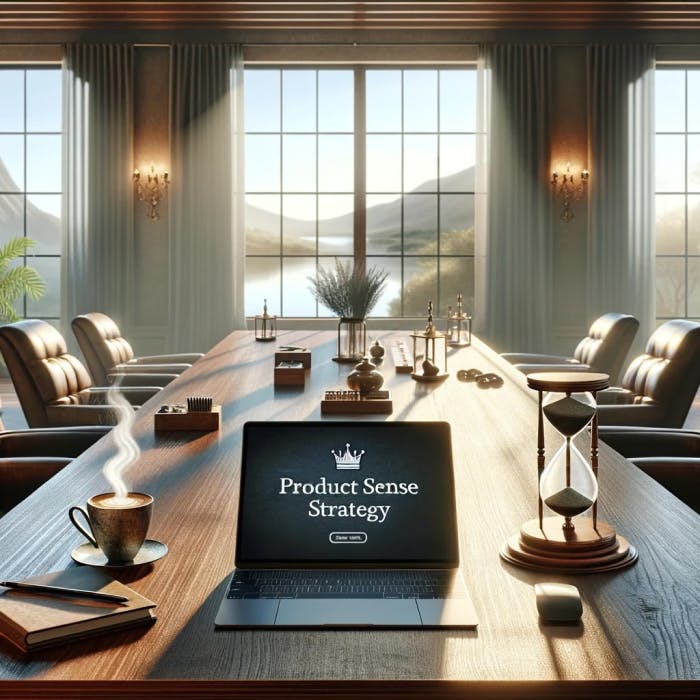Updated: January 24, 2024- 7 min read
Editor’s note: The following is a guest post.
Meet the Author: Ketan Nayak

Ketan Nayak is a product manager with close to a decade of experience working in the enterprise SaaS space. He is currently a product lead at Coalition and previously led product teams at Dropbox and Applied Predictive Technologies (Mastercard).
We all know that a product management role varies quite a lot from company to company. The nature of the role, expectations, and how it fits into the rest of the organization can be different. One of the main reasons for the PM role to be quite different across companies is company size. Product managers early in their careers or aspiring PMs often ask me how the size of the company affects the role. And whether they should go in for a role at a small company or a large one.
Here, I’ll shed light on the dimensions that these roles can vary by. As an APM out of school, I joined a mid-sized company called APT (then acquired by Mastercard), when it had ~400 people. Then I transitioned into Dropbox and by the time I left the company, we had about 4000 employees. About a year ago, I joined the product team at Coalition, when it had 40 employees. By building products in these roles, I have observed key dimensions along which the PM role varies by.
The dimensions
There are 6 key dimensions by which the product roles can vary:
Scope
Process
Ownership
Agency
Impact
Network
At a high level, these distinctions are somewhat of a broad generalization. There will always exist examples in the wild that deviate from these norms.
1. Scope of the product role
If you’re a PM at a start-up with <10 employees, then you’re mostly doing everything apart from building (and sometimes that too). At the 40 person mark, early kernels of various departments start to form. You’ll have some support from Design, Sales, Marketing etc. You’ll still be working in the areas of customer success, product analytics, and user research to name a few.
As the company grows, more specialized roles and functions get added. The PM role reduces in scope (breadth). At the extreme end, the PM role is more of a pure prioritization role. You’ll focus on deciding what to build when and for whom.
2. Process
At large companies, the product process is established and well-understood. Product proposals go through multiple formal reviews before getting signed-off for development. On one hand, it takes time to get things done and is slow. For young PMs though, it’s a valuable learning ground on decision making and best-practices. At my mid-sized company, given the size of the org, we executed on large projects with a one single formal product review. We skipped them for smaller projects.At startups, processes rarely exist. Decision making is fast and less structured. Since processes don’t exist, you’re not learning from what already exists. Rather you’re learning by doing and seeing what works and what doesn’t.
3. Ownership of product(s)/feature(s)
Product ownership is the biggest naturally-occurring difference between companies of varying size. At a small startup, each PM will own entire product areas and/or business lines. You’ll be looking at the product as a whole and prioritizing the strategy/ roadmap for the whole product. There is little to no collaboration with other PMs.
As the company grows in size, that begins to change. At the mid-size, you typically own significant portions of an established product or are starting a new initiative off the ground. In my case, I worked on the core, established product with 3 other PMs. Each of us was responsible for a significant chunk of the product. At a large company, you will be responsible for a particular feature set or part of the product. There is often cross-collaboration with several PMs to get projects over the line.
4. Agency
““High Agency is about finding a way to get what you want, without waiting for conditions to be perfect or otherwise blaming the circumstances. High Agency People either push through in the face of adverse conditions or manage to reverse the adverse conditions to achieve goals.””
Startups are naturally high-agency environments. This is true given the ownership, scope and process (or the lack thereof) that exist within startups. In startups, things aren’t perfect and people are consistently going above and beyond to get things done. Startups also attract people who are high-agency – this can be a good place to see them in action and develop this habit.
On the contrary, large companies tend to default towards low-agency environments. The processes, structure and strict boundaries of ownership make it harder to be high-agency in a holistic sense. This is especially true when you are spending a lot of time executing on a specific part/feature of the product.
There are ways in which large companies can create a high-agency environment. For instance at Dropbox, we ran a program called Dynamo, which was our own internal project incubator. Company-wide hackathons were also a proving ground for new and untested ideas.
5. Impact
At smaller companies, we already talked about ownership and scope being large. As a result the depth of your individual impact as a PM on the product tends to be high. Given that product is yet to take off, you are working with a relatively small number of users for your product. As a result, your individual contribution at a startup is going to be high depth, low breadth. That is, your contributions often deeply change the product and the product experience. But, that contribution affects only a small number of users.
At larger companies, you will be working on a reduced product scope but one that impacts a very large number of users. At Dropbox, the features I was working on would touch product surfaces visited by millions of users on a daily basis. However, it was marginally improving their current experience within the product. So when it comes to individual product impact, at larger companies, it is likely going to be high breadth, low depth from a user-standpoint.
There are good exceptions to this, of course. WhatsApp had only 55 employees when they were serving 450 million users and were acquired by Facebook.
6. Network and Brand
This final point is not necessarily about what you will have when you are working in the role. It is what you will leave with when you move on to your next tour of duty.
At large companies, you get two additional benefits: Network and Brand. Since you will work with many people over the course of time, your network will naturally widen with time. Further, larger companies tend to be more well-known and have established brands. These will stand out when you look for your next role.
You might also be interested in: The Difference: Brand Manager and Product Manager
At smaller companies, your company’s brand is going to be very small or non-existent (unless it grows with time). However, given the hard times faced together with a tight knit group of people, you will build deeper and stronger relationships with your small team. And that will last you for your entire career.
Summary
To summarize, we can adopt a framework similar to the one used in The Culture Map by Erin Meyer to map how the 6 dimensions of PM experience vary across companies of different sizes.
At the end of the day, regardless of the trade-offs, each role gives you a unique opportunity to learn, build skills and grow into a better product professional.
Updated: January 24, 2024




